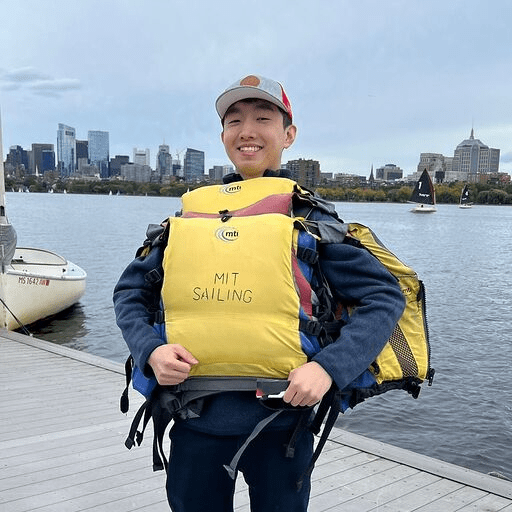We are the MIT SideWalk AstroGazers (SWAG) outreach group! We are a group of graduate student volunteers, mostly in the MIT Physics Department. Our group focuses on bringing the wonders of astronomical observations and science to the streets of Cambridge and Boston (and occasionally beyond)!.
Meet our Founder!
Duane M. Lee, Ph.D. (Founder/Alumni)

Dr. Duane M. Lee is an MLK visiting scholar in Physics at MIT and works at the MIT Kavli Institute for Astrophysics and Space Research. Visiting from Nashville, Tennessee, Dr. Lee holds a joint Postdoctoral Fellowship in Physics at Fisk University & Vanderbilt University. As a galactic astronomer, Dr. Lee’s research interests lie in: Galactic archeology and near-field cosmology (with a focus on the origin of stellar populations in the Milky Way), galactic chemical. evolution of dwarf galaxies, and the assembly of the Galactic halo. Dr. Lee uses techniques like “statistical chemical tagging” of halo stars and tracing of multiple stellar generations in galactic chemical evolution modeling to uncover and help constrain the nature of nucleosynthetic yields and sites for chemical elements such as neutron-capture elements. Dr. Lee is originally from Pittsfield, MA and holds an BA w/Honors from Williams College in Astrophysics, an MA from Wesleyan U. in Astronomy, and a Ph.D. from Columbia U. in Astronomy. You can learn more about Duane’s research and other interests from his MKI homepage & personal webpage, The Galactic Genealogist.
Meet our current co-directors!
Dominika Durovcikova

Dominika is a 4th year PhD student at MIT Physics. She spends her days thinking about the earliest supermassive black holes in our Universe, and some of her nights observing them. She loves getting people excited about astronomy, so don’t hesitate to ask questions if you meet her!
Megan Masterson

Megan is a PhD student in the MIT Physics Department studying transient accretion onto supermassive black holes. She’s particularly interested in understanding the physics behind tidal disruption events, which occur when an unfortunate star becomes a snack for a hungry black hole. Megan is an observer at heart and makes use of many telescopes at all different wavelengths to do her science. In her free time, you’ll find her sharing astronomy with the public, hiking, and watching women’s soccer.
Tri Nguyen

Tri is a Ph.D. candidate at the MIT Kavli Institute for Astrophysics and Space Research. He is interested in using machine learning to study dark matter and structure formation in the Universe. In his free time, you can catch him break-dancing in Cambridge dance studios, exploring the local culinary scene, or using ChatGPT.
Meet our observing crews!
Andrew Zhang

Andrew is a PhD student in the Harvard-MIT Health Sciences and Technology program. He is committed to leveraging AI to make medical care more accessible, reliable, and equitable. His current research centers around AI models for diagnosing cancer and other pathologies from medical imaging data. Prior to graduate school, Andrew studied biology and computer science at Harvard. Outside of work, Andrew enjoys astronomy outreach, sailing, and visiting old bookstores.
Danielle Frostig

Danielle Frostig is a graduate student in the MIT physics department. In addition to enjoying observing with telescopes, she also enjoys building telescopes and exciting new instruments for them. Danielle is currently working on building WINTER, an infrared survey telescope designed to detect astronomical transients—most notably the electromagnetic counterparts to LIGO detections.
Haochen Wang

Haochen is a PhD student working with Professor Kiyoshi Masui on foreground removal algorithm for hydrogen surveys. He works with data collected by the CHIME Telescope. He graduated from the University of Southern California in 2019 with majors in Astronomy and Mathematics and a minor in Music.
Jacob P. Willis

Jacob is a graduate student at the MIT Kavli Institute for Astrophysics and Space Research. He is working on the localization of fast radio bursts through very long baseline interferometry. Outside of research, you might find Jacob in the White Mountains, training for triathlons, or catching up on sleep.
Joheen Chakraborty

Joheen is a graduate student interested in various areas of high-energy astrophysics, including accretion onto compact objects, millihertz gravitational wave sources, and extragalactic transients. He is primarily an X-ray astronomer, which means the data he works with comes with few enough photons that he gets to name each one.
Laurel White

Laurel is a third-year grad student in the astro division of the MIT physics department. She works with Mike McDonald doing observational research focused on galaxy clusters, which are the largest gravitationally-bound objects in the universe. She is particularly interested in population statistics of galaxy clusters and their evolution over the past several billion years. She works mostly with X-ray data from the Chandra Space Telescope. In her free time, she likes to hike with her dog and do any craft that involves yarn.
Lisa Drummond

Lisa is an MIT physics grad student and she studies the ripples in spacetime (gravitational waves) produced by colliding black holes! Outside of astrophysics, she loves animals of all kinds, watching TV and exploring new cities when she travels.
Mason Ng

Mason is a graduate student in the MIT physics department, and he works on characterizing neutron stars – objects the size of Boston but are a thousand trillion trillion times heavier (1030 kg) than a car. He uses data from a variety of X-ray telescopes, such as the Neutron star Interior Composition ExploreR (NICER) attached to the International Space Station. He has previously done research on stellar atmospheres of low-mass and massive stars, machine learning applied to diagnosing poor astronomical seeing, inflation (not the economics kind), the Cosmic Microwave Background, and on gas flows around galaxies. He comes from New Zealand, where Orion is upside down and the Milky Way is up at night all year, but he has also spent over a decade in Singapore, where there is heavy light pollution. Feel free to chat with him about all things astronomy!
Michael Calzadilla

Michael is a graduate student in the physics department. His research focuses on galaxy formation and evolution, active galactic nuclei, and the diets of black holes. He is getting his observational training on the 6.5m Magellan telescopes at Las Campanas Observatory in Chile and the Mauna Kea Observatory’s 8.1m Gemini and 3.6m CFHT telescopes in Hawaii. His research also makes use of space-based observatories like the Chandra X-ray telescope, the Hubble Space Telescope, and the Very Large Array radio interferometer. Michael is also interested in astrophotography of near and deep space objects.
Michael Reefe
Michael is a graduate student in the physics department working with 2 other Michaels to study galaxy clusters. He is specifically interested in the gas between and within the galaxies and how its interactions with the central supermassive black hole shape the evolution of the surrounding environment. His research has made use of observations from the 8.1 m Gemini South telescope in Chile and space-based instruments including JWST.
Orisvaldo Salviano Neto

Oris is a alum from the undergraduate Class of 2023, with a degree in B.S. in Physics and minors in Astronomy and Mathematics. He currently works at the Physics Department as a Technical Instructor and he hopes to pursue a Astronomy and Astrophysics PhD Program starting Fall 2024. He loves astronomy outreach and education, and playing with telescopes, so naturally he is part of Astrogazers. In addition, he is currently working in research with Prof. Anna Frebel in investigationg some of the oldest stars in our Milky Way (some even older than the Milky Way itself!).
Sahil Pontula

Sahil is a PhD student in the MIT EECS/Physics departments, working to understand how to generate and apply quantum states of light to new photonic devices. He is an avid soccer and piano player and is keen to continue sharing his passion for astrophysics and observational astronomy.
Swati Ravi

Swati is a PhD student in the MIT physics department. She works on building telescopes that fly to space and observe light from energetic events in the universe that can be difficult to see from the ground. In her free time, she enjoys reading, painting, and caring for plants.
Sydney Jenkins

Sydney is a third-year graduate student in the MIT physics department. She studies exoplanets and is particularly interested in systems around white dwarfs. She also loves hiking, reading, and finding new craft projects.
Xiaowei Ou

Xiaowei is a 4th year PhD student at MIT Physics and observational astronomer. He uses stars to learn about the history of the Milky Way by looking at how stars move and what they are made of.
Alumni
David Berardo – Kaley Brauer – Nicholas Merle – Manwei Chan – Taweewat Somboonpanyakul (Champ) – Liz Nagler – Ani Chiti – Tom Cooper
